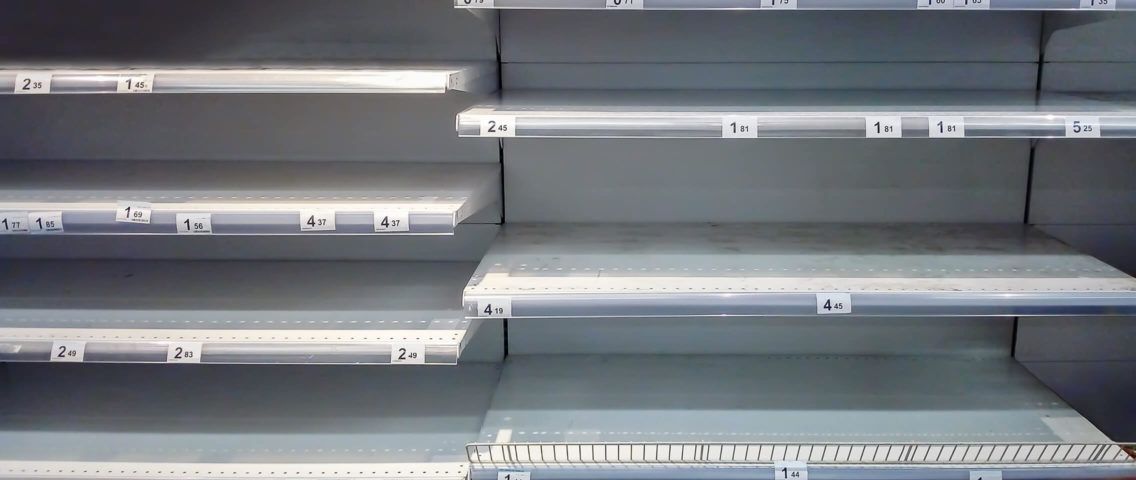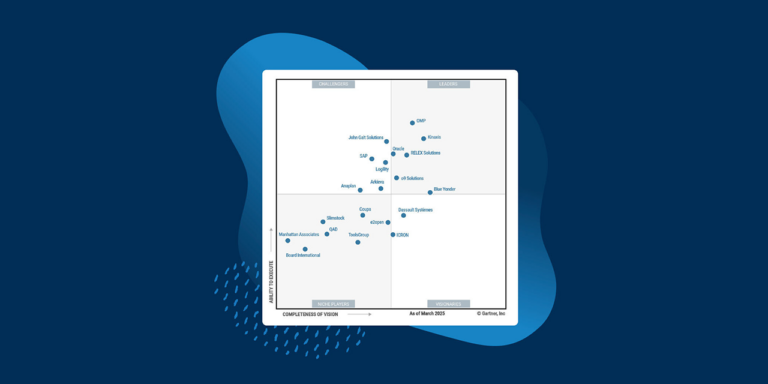Effectively managing demand increases from the Coronavirus
Mar 13, 2020 • 5 min
The impact of the coronavirus (COVID-19) has already spread well beyond the public health sector: stock markets have fallen; the travel sector is struggling; and individuals are either preparing for or already coping with disruptions to day-to-day life. One of the most immediate challenges to retail supply chains is consumer stockpiling emptying shelves across the world. We’re observing this especially at RELEX’s grocery customers throughout our markets, with great demand surges in some categories, such as hand sanitizers. But we’re also working closely with customers to share strategies that will minimize negative impact — and we’ll share our recommendations with you here.
It’s important to note that no one approach will work for all companies, so consider which strategies make the most sense for your specific business model. For example, retailers with e-commerce or omnichannel models should prepare for large demand increases in online channels, as many shoppers consider home-delivery a safer alternative to crowded stores.
Under normal conditions, we always recommend automated supply chain processes with manual intervention only when the system triggers exception alerts. The current moment, though, is one of the rare instances in which our best practice recommendation is to turn to your demand experts to guide the system toward optimal business decisions before, during, and after the demand increase.
We make this recommendation because no system, no matter how advanced, can accurately automate calculations when there’s no historical precedent on which to model forecasting. What we can automate is the execution of your planners’ expertise, whether changing forecast models or applying business rules to update safety stock limits.
Anticipating the Demand Increase
Even if you’ve not yet seen a sales increase, planners should be making educated predictions, correcting forecasts for the products they know will see higher sales. Some of our customers have chosen to focus their increases on key items within each category, ensuring category-level availability while minimizing the risk of excess stock. The categories we’ve seen most impacted include non-perishable foods, healthcare and hygiene products, and cleaning and disinfecting products. However, we’ve observed a significant rise across the entire assortment at many retailers.
It’s likely that demand planners will be uncertain about how some categories within your assortment will behave. If you’re not confident about how a given category will sell, it may make more sense to increase safety stock levels instead of forecasts to account for that demand uncertainty.
Some have asked whether historical data from previous pandemics like avian flu or swine flu could serve as good models for automated calculations. Our view is that it’s simply too risky to assume that one flu will affect the supply chain like the last. Every public health event of this sort evolves differently, and consumer behavior is further impacted by social media and news coverage. While we can seek insight from previous similar events about which categories will most likely be affected, cases like this are unique and should be treated as such.
Managing the Demand Increase
Once stores begin experiencing demand increase, continuous monitoring becomes critical. Retailers are predicting it could take weeks of reactive monitoring before operations normalize, so planners should settle into the “new normal” for some time.
We’ve observed intense variation in the demand shift between our markets. In North America, we’re seeing a clear sales increase, with demand peaks on par with or even higher than holiday sales. We predict that North American figures will continue to rise in the weeks to come, but customers in more heavily impacted markets like Italy, Austria, and Germany are already experiencing enormous spikes at the category level. We’ve seen sales of canned products more than double, with even higher increases in some subcategories. Because of this unpredictability, every retailer must accurately track how their demand actually changes relative to their predictions, then react and adjust quickly.
To identify areas in which predictions need to be adjusted, planners should create exception views within the planning system to highlight differences between forecasts and actual short-term sales. For the duration of the demand uncertainty, planners should frequently check these views and adjust forecasts as needed.
Inventory shortages will become a pressing concern as vendors run low on supply to meet the increased demand. Make use of your system’s scarcity allocations to push stock to the stores experiencing the greatest need rather than on a first-come-first-serve basis. My colleague Cley has written in more detail about how to meet demand increases despite inventory scarcity.
Returning to Baseline Forecasts
Eventually, the impact of the coronavirus on both lives and the supply chain will ease, at which point retailers must quickly and accurately return to baseline forecasts. Flagging the impacted demand period with a coronavirus “event” enables the forecasting system to automatically clean out the effect of the associated sales. This ensures more accurate forecasts in the weeks to come, and also prevents misinterpretation of the event data as a seasonal increase the following year.
Those retailers who overestimate the demand increase will have large amounts of excess inventory on hand in the aftermath. For many, push allocation to divide excess warehouse stock optimally across stores will be necessary. In extreme cases, though, it may even make sense to execute markdown campaigns to alleviate overcapacity in distribution centers and prevent revenue loss due to product spoilage.
The Role of Technology
There’s simply no way to accurately automate processes for exceptional demand periods. In times of uncertainty, retailers must always make a business decision on what would be the worse outcome: the risk of stock-outs or the risk of overstock. We’ve always said that AI can never replace business expertise, and this truth is born out clearly during supply chain crises like this. Retailers must trust their experts to manage the lifecycle of this event — but hopefully, your planners also have tools at their disposal to help them make the right decisions as quickly and efficiently as possible.
Granular analytics with a clean user interface will help users analyze large amounts of data, execute controlled business decisions, and examine the impact of those decisions for continuous refinement during this period of uncertainty. Planners need visibility into sales figures across categories, including flexible, configurable exception views that highlight all categories experiencing large sales increases.
This level of granularity is critical because merely raising forecasts by 50% across the inventory will wreak havoc on stock levels. You need to understand how specific product groups are being impacted differently to identify the increases that best serve your business.
Unfortunately, there’s no guaranteed practice or process that will eliminate risk during the outbreak of COVID-19. Instead, planners must weigh the risk of lost sales from stock-outs against the risk of excess stock from over-forecasting — and prepare to proactively address all consequences with the support of their technology solutions.



